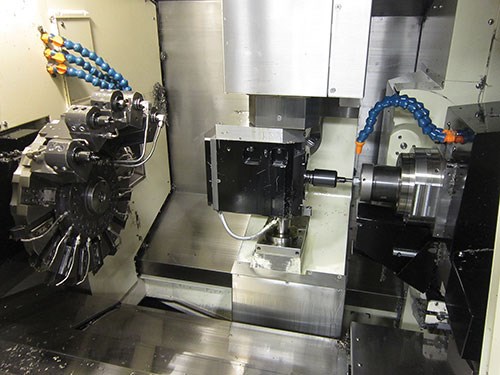Advantages of a B-Axis Swiss-Type
Learn how a Northeastern shop leverages a Swiss-type lathe with a B-axis milling spindle to produce small batches of complex parts.

The signature element of this Swiss-type machine is its B-axis milling spindle. This differs from conventional Swiss-type designs that use gang-style tools that are fixed in their orientation with the part, either perpendicular to the face or diameter of the barstock.
When equipped with a B-axis milling spindle, a Swiss-type lathe essentially becomes a five-axis turn-mill with the bonus of a sliding headstock. The sliding-headstock is what enables the machine to effectively turn long parts with small-diameters, while the B-axis milling spindle can approach workpieces in the machine’s main or subspindle at a variety of angles.
Magnus Precision Manufacturing leverages this technology to produce small batches of long, complex parts. Learn more in this story.
Related Content
-
Modern Bar Feeds Bring New Life to Automatic Swiss Lathes
Cam-actuated Swiss lathes are still the fastest way to process many parts. By adding modern bar feeders, this shop has dramatically improved their utilization with the ability to work unattended, even in a lights-out environment.
-
How to Start a Swiss Machining Department From Scratch
When Shamrock Precision needed to cut production time of its bread-and-butter parts in half, it turned to a new type of machine tool and a new CAM system. Here’s how the company succeeded, despite the newness of it all.
-
IMTS 2022 Review: Attention to Automation Extends Beyond the Robot and the Machine
The advance toward increasingly automated machining can be seen in the ways tooling, workholding, gaging and integration all support unattended production. This is the area of innovation I found most compelling at the recent International Manufacturing Technology Show.

.jpg;width=70;height=70;mode=crop)











